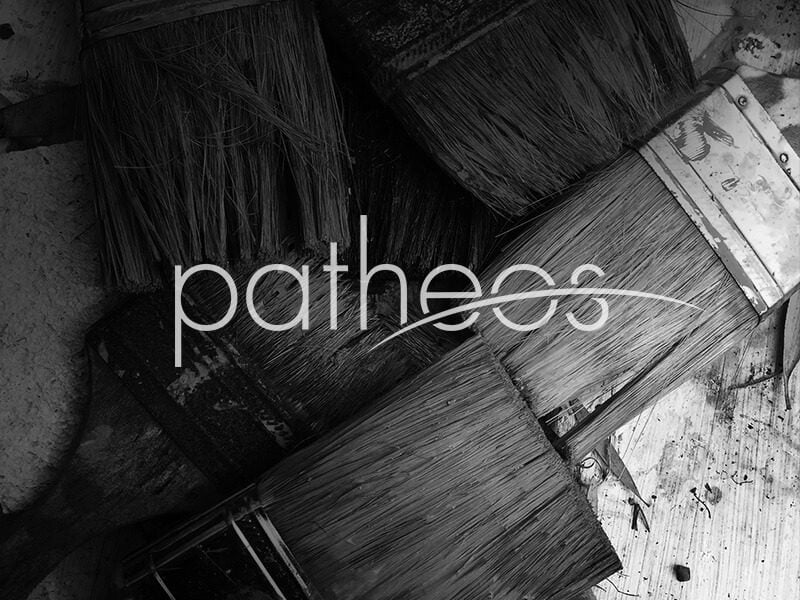In a Bill Mauldin cartoon that ran in Stars and Stripes during World War Two, two officers are standing on a peak somewhere in the Apennines or Vosges, gazing at a breathtaking sunset. Turning toward the other, one asks, “Beautiful view! Is there one for enlisted men?”
This image, I’m afraid, is exactly what comes to mind when I consider the news that, beginning at some nearby but unspecified date, the Diocese of Phoenix will distribute the Precious Blood to laypeople only on very special occasions.
Keep your powder dry, liturgy geeks. I know this decision isn’t arbitrary. In a press release isssued September 22nd — two days before I heard the news at Vigil Mass — the diocese explained it’s only holding to the norms laid out in General Instruction of the Roman Missal, 3rd Edition. Reception of both species was granted in 1975, on an experimental basis, and only in the U.S., the U.K. and Oceania. The experiment ended in 2005. It could be argued without too much difficulty that we’ve been receiving the wetter specie for six years longer than we’d a right to do.
What bothers me, though, is an aside that appears toward the end of the press release, when the diocese mentions that “when both forms of Communion are used frequently, ‘extraordinary’ ministers of Holy Communion are disproportionately multiplied.” No one can deny it — those EMs do clutter up the sacred space some. Their very title gives them away as extraordinary, or to get ugly about it, superfluous. But they’re also a fact. To downsize them, as it were, smacks of the kind of efficiency and practicality for which the Church is completely — and wonderfully — unknown.
For a while, I spent every Wednesday evening working in the kitchen at a homeless shelter called Andre House. So did about 30 other people from my parish. If the place depended on paid employees, the work we did would have been divided among ten people, tops. But since we were volunteers, getting the job done cost-effectively was beside the point. Rather, the point was to give as many people as possible a chance to connect with the apostolate, to feel involved. As it happened, the fact that an army was sharing such a small space meant a lot of us caught unexpected elbows to the gut. But it also meant that the work got done with astonishing speed. Those homeless got served so many helpings so quickly, they must have thought we were fattening them up for the slaughter.
Serving as an EM, like manning a soup kitchen, is an enriching experience. But the enrichment is of a very different type. I’ve only done it a few times — at my old parish, I was a second-stringer, called up when one of the regulars flaked — but on each of those occasions, I was struck by how transformed all the recipients looked. Awe and anticipation had erased everything petty or silly from their faces, and teased out everything good and fine and noble. Even the people I knew well looked like strangers — strangers I was sorry I hadn’t met.
I gather it’s become conventional wisdom to say the opposite — that most communicants behave on the receiving line like barbarous Unitarians, clipping their nails, sending text messages, or changing their tampons. Maybe they look that way from the side, to someone studiously comparing their conduct to his own (which is above reproach, natch). Faced head-on, the picture is very different.
At most of the other parishes I’ve attended, the EMs tend to be senior citizens. This is good for two reasons. First, once they reach a certain age, most people develop a grandfatherly or -motherly touch; they won’t thrust the Sacrament at a communicant like they’re stamping his hand in front of a club. Second, EM-ing is low-intensity work. It’s something of the greatest importance that elderly people can do without straining themselves. Not all people were blessed with the constitution required to catechize the !Kung or take dives in front of Israeli bulldozers.
Adoration sounds like a fair substitute, does it? It’s certainly a wonderful practice in its own right — one that I enjoy myself, despite my blooming youth. But it doesn’t have much in common with EM-ing at all. One’s a spectator sport, the other a hands-on experience. Implicit in the old joke, “If you can’t be an athlete, be an athletic supporter,” is that rounding the bases, storming the pitch, crowding the goalie’s crease, is everyone’s natural first choice.
Not the point? Well, Sir or Madam, I happen to be the writer here, and I’m making it the point. Part of what drove me through the Church’s gates was the promise of transcendence on the cheap. At a certain point, I realized I’d spend my life in cubicles, permitted only an hour-long lunch and two fifteen-minute breaks during which to slip the noose of corporate scrutiny from my chafed neck. I’d never make enough money to take vacations to great cultural capitals or scenic spots, or to fill my house with any objets rarer or more beautiful than Ikea sells. In the Church, I believed, I could at least take part in the divine liturgy, if not quite as an equal to the priest, then as…somebody .
Well, so much for that. Now it’s more of “This is your seat. Sit quietly. Please do not talk to your neighbor.”
Quote me all the learned writings going all the way back to Trent and beyond. It’ll still seem to me like a lousy bait-and-switch.











